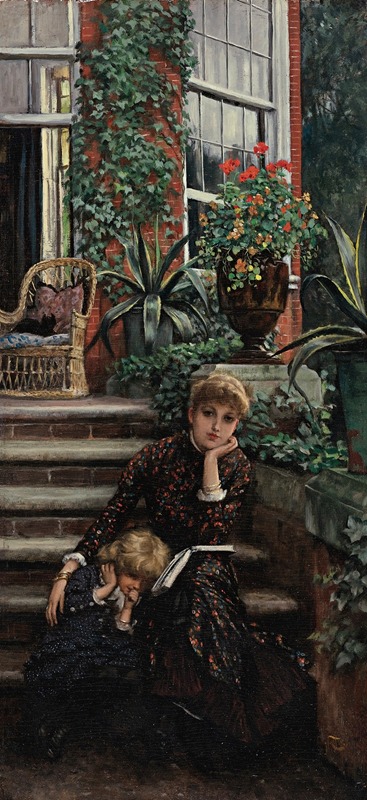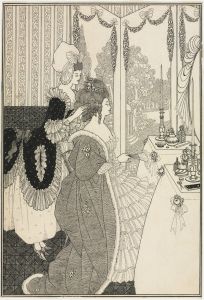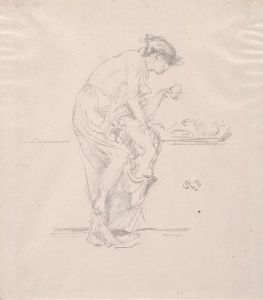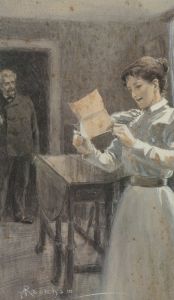
La Soeur Aînée
A hand-painted replica of James Tissot’s masterpiece La Soeur Aînée, meticulously crafted by professional artists to capture the true essence of the original. Each piece is created with museum-quality canvas and rare mineral pigments, carefully painted by experienced artists with delicate brushstrokes and rich, layered colors to perfectly recreate the texture of the original artwork. Unlike machine-printed reproductions, this hand-painted version brings the painting to life, infused with the artist’s emotions and skill in every stroke. Whether for personal collection or home decoration, it instantly elevates the artistic atmosphere of any space.
James Tissot, a renowned French painter and illustrator, created the artwork "La Sœur Aînée" (The Elder Sister) in the late 19th century. Tissot was known for his detailed and realistic portrayals of contemporary life, often focusing on themes of fashion, society, and domesticity. "La Sœur Aînée" is a testament to his skill in capturing the nuances of human relationships and the subtleties of social interactions.
The painting depicts an intimate domestic scene, characteristic of Tissot's work during this period. It features an elder sister, as suggested by the title, who is likely engaged in a moment of care or instruction with a younger sibling. This theme of familial relationships and the role of women in the household was a common subject in Tissot's oeuvre, reflecting the societal norms and expectations of the time.
Tissot's technique in "La Sœur Aînée" is marked by his meticulous attention to detail and his ability to render textures and fabrics with precision. The clothing of the figures is depicted with a high degree of realism, showcasing the fashion of the era and Tissot's interest in the sartorial elegance of his subjects. This focus on fashion not only highlights the social status of the characters but also serves to situate the painting within a specific cultural and historical context.
The composition of the painting is carefully arranged to draw the viewer's attention to the interaction between the siblings. Tissot often employed such compositional techniques to create a narrative within his works, inviting viewers to engage with the story being told. The use of light and shadow in the painting further enhances the mood, adding depth and dimension to the scene.
"La Sœur Aînée" is part of Tissot's broader body of work that explores themes of modernity and the complexities of social life in the 19th century. His paintings often reflect the changing dynamics of society, particularly the roles and expectations of women. Through his art, Tissot provides a window into the domestic sphere, capturing moments of everyday life with sensitivity and insight.
James Tissot's career spanned several decades, during which he achieved considerable success both in France and England. His work was well-received by contemporary audiences, and he exhibited regularly at prestigious venues such as the Paris Salon and the Royal Academy in London. Today, Tissot's paintings are held in high regard and are part of numerous public and private collections worldwide.
"La Sœur Aînée" exemplifies Tissot's ability to blend narrative content with technical skill, resulting in a work that is both visually appealing and rich in meaning. Through this painting, Tissot continues to engage and captivate audiences, offering a glimpse into the lives and relationships of the past.











![Prosperity [Mr. Lionel Lawson]](/imgs/214446/s/james-tissot-prosperity-mr-lionel-lawson-8cd5fc08.jpg)






